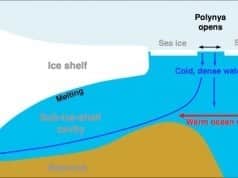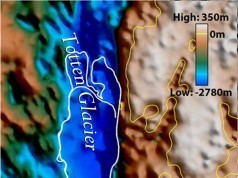One of the enormous red flags for the skeptically-minded in the climate debate is that the data on which important papers/decisions/policies depend have been kept secret. This doesn’t inspire confidence.
Back in 2003 Steve McIntyre and Ross McKitrick used a data file provided by US climatologist Michael Mann to try to verify the math behind Mann’s hockey stick temperature graph. That graph was the most important visual in the 2001 report by the Intergovernmental Panel on Climate Change.
The fact that the two Canadians got different results was another one of those red flags. Mann said this was because they’d failed to exactly replicate his computational steps. As McKitrick recalls: “So we requested his computational code to eliminate these easily-resolved differences. To our surprise he refused to supply his computer code.”
Why? Mann considered it his own private property. Really.
In 2005 Mann sent a letter to the head of a subcommittee of the US Congress investigating this matter. It declared:
It also bears emphasis that my computer program is a private piece of intellectual property.whether I make my computer programs publicly available or not is a decision that is mine alone to make.
To support his position, Mann quoted a snooty 2003 e-mail that David Verardo, a senior employee at the National Science Foundation, had sent to McIntyre:
Dr. Mann and his other US colleagues are under no obligation to provide you with any additional data beyond the extensive data sets they have already made available. He is not required to provide you with computer programs, codes, etc. His research is published in the peer-reviewed literature which has passed muster with the editors of those journals and other scientists who have reviewed his manuscripts. You are free to [conduct] your analysis of climate data and he is free to [conduct] his. The passing of time and evolving new knowledge about Earth’s climate will eventually tell the full story of changing climate.
When the National Science Foundation thinks it’s OK for a scientist at a public-funded university to conceal part of the process used to produce one of the most important graphs in history the stench is not easily forgotten.
To my knowledge Greenpeace didn’t scale any National Science Foundation buildings and unfurl any banners demanding public access to Mann’s computer code. Rather, the struggle to secure access to this and many other kinds of climate-related data has been the lonely, thankless, often-fruitless job taken on by private citizens who comprise the bulk of the writers and readers of the skeptical blogosphere.
So topsy-turvy is the world in which we now live that, when such people file Freedom of Information (FOI) requests, they are subsequently accused of harassing climate scientists.
As someone who filed more than my share of FOI requests when I worked as a full time journalist I find this amusing. The entire point of FOI laws is that the public has a right to know. What the people being asked for information think about you is irrelevant. The law doesn’t say they only have to hand it over if they believe you’re a nice person, or if you haven’t made them feel harassed. It says that because they work for a publicly-funded entity this information is available for the asking.
I therefore read a post over at the Shub Niggurath Climate blog yesterday with a great deal of relish. Apparently, Greenpeace now thinks everyone should have access to the underlying calculations that produce the numbers that get cited by important documents it happens to disagree with. Apparently, Greenpeace now thinks that hiding behind claims of intellectual property stinks.
Shub’s post is titled Greenpeace demands open data availability. It includes a lovely Greenpeace graphic that suggests that, when decisions are made in a ‘top secret’ milieu the result is ‘covert calculations.’
You’ve gotta read it. It’s hysterical.





